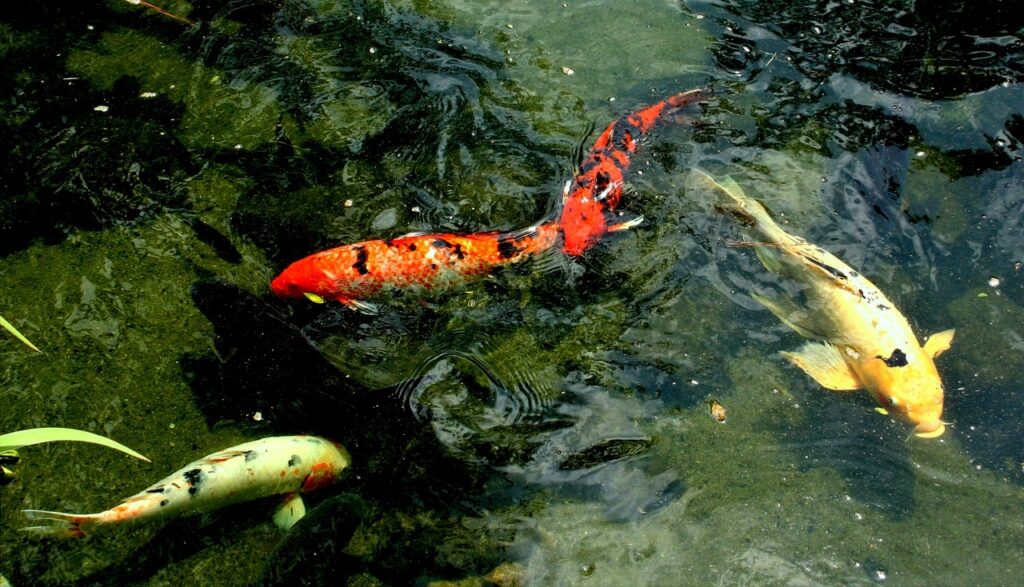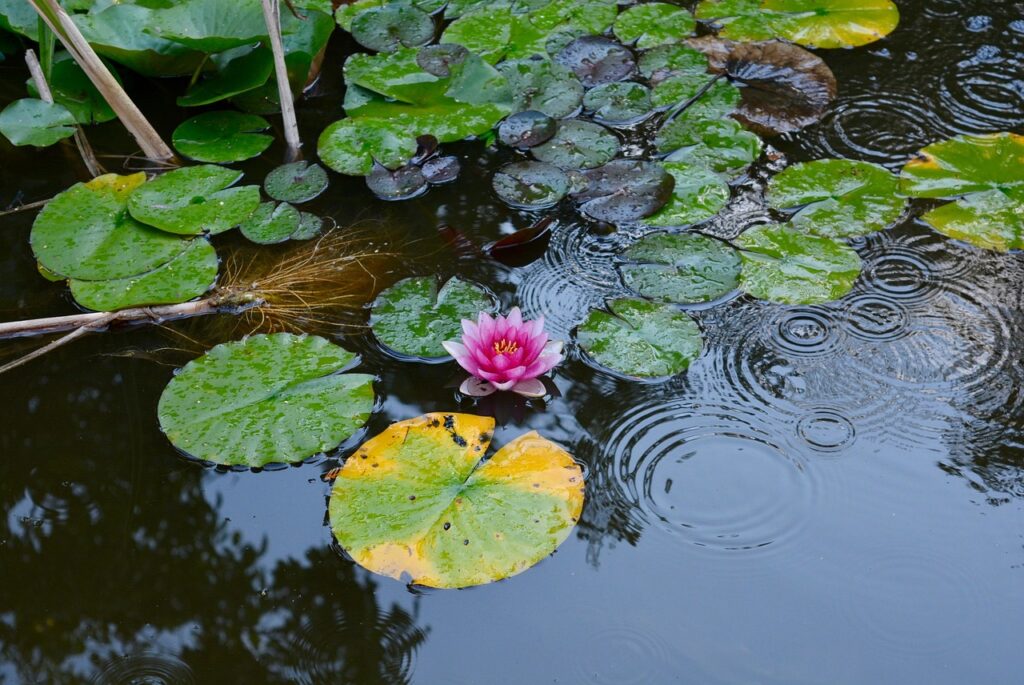Have you ever wondered why fish ponds sometimes become overgrown with green algae? I will explore the reasons behind this phenomenon of why fish ponds turn green and share some tips on how to prevent and manage the excessive growth of algae in your fish pond.
Algae can not only make your pond look unattractive, but it can also harm the fish and disrupt the overall ecosystem. So, let’s dive into the world of green fish ponds and uncover the secrets behind their transformation.
Introduction
Fish ponds are artificial bodies of water that serve as habitats for fish and other aquatic organisms. They are not only aesthetically pleasing but also provide numerous ecological benefits. However, maintaining a healthy fish pond requires constant effort and attention. In this article, I will discuss the factors that cause fish ponds to turn green and provide tips on how to prevent and resolve these issues.
Definition of green fish ponds
Green fish ponds refer to ponds that have an excessive growth of algae, giving the water a greenish hue. Algae are microscopic organisms that thrive in water and can quickly multiply under favorable conditions. While some algae are harmless, excessive growth can negatively impact the ecosystem of the pond and the health of the fish.

Importance of maintaining a healthy fish pond
Maintaining a healthy fish pond is crucial for several reasons. Firstly, it ensures the well-being of the fish inhabitants by providing them with clean and oxygen-rich water. A healthy pond also supports a diverse range of aquatic life, creating a balanced ecosystem. Additionally, a well-maintained pond enhances the beauty of the surrounding landscape and provides a serene environment for relaxation and enjoyment.
Factors causing green fish ponds
Several factors contribute to the development of green fish ponds. Understanding these factors is essential in order to take appropriate preventive measures and address the issue effectively. The main factors leading to green fish ponds are excessive sunlight, high nutrient levels, algae growth, lack of oxygen, and poor filtration systems.
Excessive sunlight
Sunlight is a vital component for the health and growth of aquatic plants in fish ponds. However, when sunlight exposure exceeds a certain threshold, it can lead to the proliferation of algae. The effects of excessive sunlight on fish ponds include increased water temperature, intensified photosynthesis in algae, and depletion of oxygen levels.
Sunlight promotes algae growth by providing energy for photosynthesis. Algae thrives on sunlight, and when there is an overabundance, it can result in an algae bloom. Preventive measures include providing shade to the pond using aquatic plants, installing pond covers, or creating artificial structures that block excessive sunlight.
High nutrient levels
Nutrient pollution is another significant factor contributing to the green coloration of fish ponds. Sources of excess nutrients can include decaying organic matter, fish waste, and fertilizer runoff from nearby agricultural or gardening activities. High nutrient levels in the water lead to an overgrowth of algae and reduce water clarity.
Excessive nutrient levels can have a detrimental impact on the overall water quality of the pond. The increased growth of algae can deplete oxygen levels and create an unfavorable environment for fish and other aquatic organisms. To prevent excessive nutrients, it is crucial to manage fish feeding practices, control organic matter accumulation, and maintain proper nutrient balance in the pond.
Algae growth
Algae are classified into various types, including planktonic algae, filamentous algae, and macroalgae. These algae types are commonly found in fish ponds and can contribute to the greenish appearance of the water. The factors that favor algae growth include high nutrient levels, warm temperatures, still water, and low biodiversity within the pond.
Excessive algae growth can create problems for fish ponds. It reduces water clarity, inhibits the growth of submerged plants, and depletes oxygen levels during the night due to increased respiration. To control algae growth, several methods can be employed, such as physical removal, biological control using beneficial bacteria or grazers, and the use of algaecides as a last resort.

Lack of oxygen
Oxygen depletion is a serious issue that can adversely affect fish and the overall pond ecosystem. Low oxygen levels in water can lead to fish stress, reduced growth, and even death. Causes of oxygen depletion include excessive organic matter decomposition, excessive algae growth, and poor aeration.
To increase oxygen levels in the pond, it is essential to address the factors that contribute to oxygen depletion. This can be done by incorporating aeration devices such as fountains or aerators, reducing nutrient levels, and promoting good circulation within the pond.
Poor filtration system
A good filtration system is crucial for maintaining water quality in fish ponds. It helps remove debris, excess nutrients, and other pollutants that contribute to the greenish appearance of the water. However, a poorly functioning or inadequate filtration system can lead to water quality issues and the proliferation of algae.
Common issues with filtration systems include clogged filters, inadequate flow rates, and improper maintenance. Regularly cleaning and maintaining the filtration system, ensuring proper water flow, and investing in high-quality equipment are essential for a healthy fish pond.
Balancing fish population
The stocking rate of fish in a pond is an important factor in maintaining a healthy ecosystem. Overstocking the pond can lead to excessive waste production, increased nutrient levels, and competition for resources among fish. These factors can contribute to water quality issues and the greenish appearance of the pond.
Calculating the right fish stocking rate involves considering the size of the pond, the species of fish, and their feeding habits. It is important to avoid overcrowding and regularly monitor the fish population to maintain balance and prevent stockpiling of nutrients.
Water quality management
Effective water quality management is vital for the health of fish and the overall ecosystem of the pond. Monitoring water parameters such as temperature, pH, and dissolved oxygen levels is essential in identifying any potential issues. Regular water testing should be conducted to ensure that the water quality remains within the optimal range.
Balancing pH, temperature, and dissolved oxygen levels is crucial for creating a suitable environment for fish and controlling algae growth. Adjustments can be made through the addition of buffering agents, aeration devices, and appropriate water circulation measures.

Conclusion
Maintaining a healthy and clear fish pond requires proactive measures and consistent monitoring. By understanding the factors that contribute to green fish ponds and implementing preventive measures, pond owners can ensure the well-being of their fish and the overall ecosystem.
A clear and healthy fish pond not only enhances the aesthetics of the surroundings but also provides a pleasant space for relaxation and enjoyment. Remember to regularly monitor water quality, maintain a balanced fish population, and address any issues promptly to keep your fish pond in optimal condition.
Benefits of a clear and healthy fish pond
A clear and healthy fish pond offers several benefits. It provides a visually appealing landscape and a tranquil environment for relaxation. The balanced ecosystem supports a variety of aquatic life, contributing to biodiversity and ecological stability. Additionally, a healthy fish pond can promote water conservation and sustainable management practices.

Summary of preventive measures
To prevent green fish ponds, several preventive measures can be implemented:
- Limit exposure to excessive sunlight by providing shade through aquatic plants or artificial structures.
- Manage nutrient levels by controlling fish feeding practices, reducing organic matter accumulation, and maintaining nutrient balance.
- Control algae growth through physical removal, biological control, and algaecide use as a last resort.
- Increase oxygen levels through aeration devices, reducing factors that contribute to oxygen depletion, and promoting good circulation.
- Maintain a well-functioning filtration system by regular cleaning, maintenance, and investing in high-quality equipment.
- Balance the fish population by calculating the appropriate stocking rate and monitoring the fish population regularly.
- Manage water quality by monitoring parameters, conducting regular water testing, and adjusting pH, temperature, and dissolved oxygen levels as necessary.
Why Fish Ponds Turn Green
By taking these preventive measures and maintaining proactive pond maintenance, fish pond owners can ensure a clear and healthy pond for the benefit of their fish, the ecosystem, and their own enjoyment.
